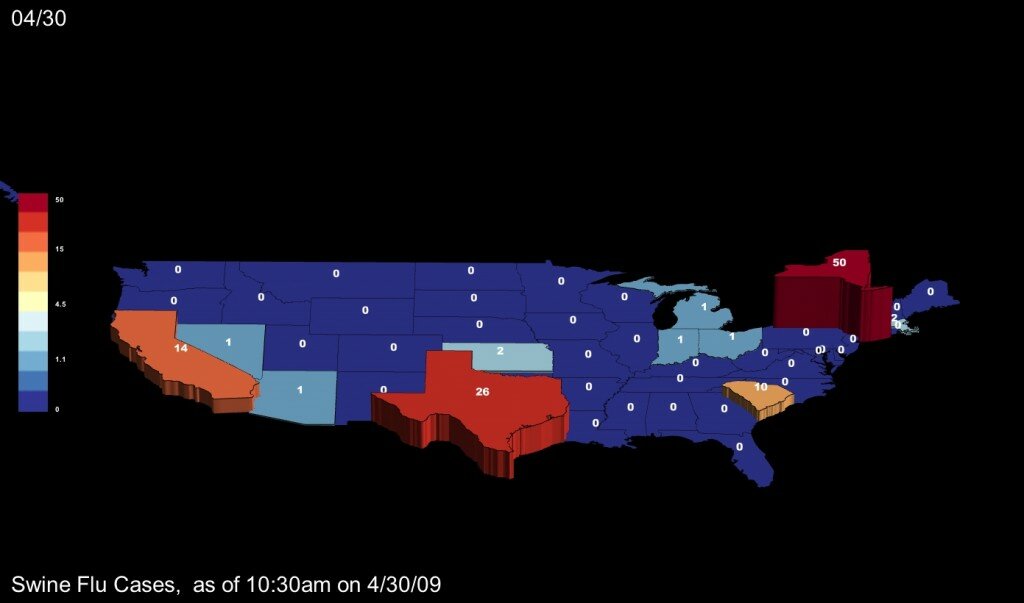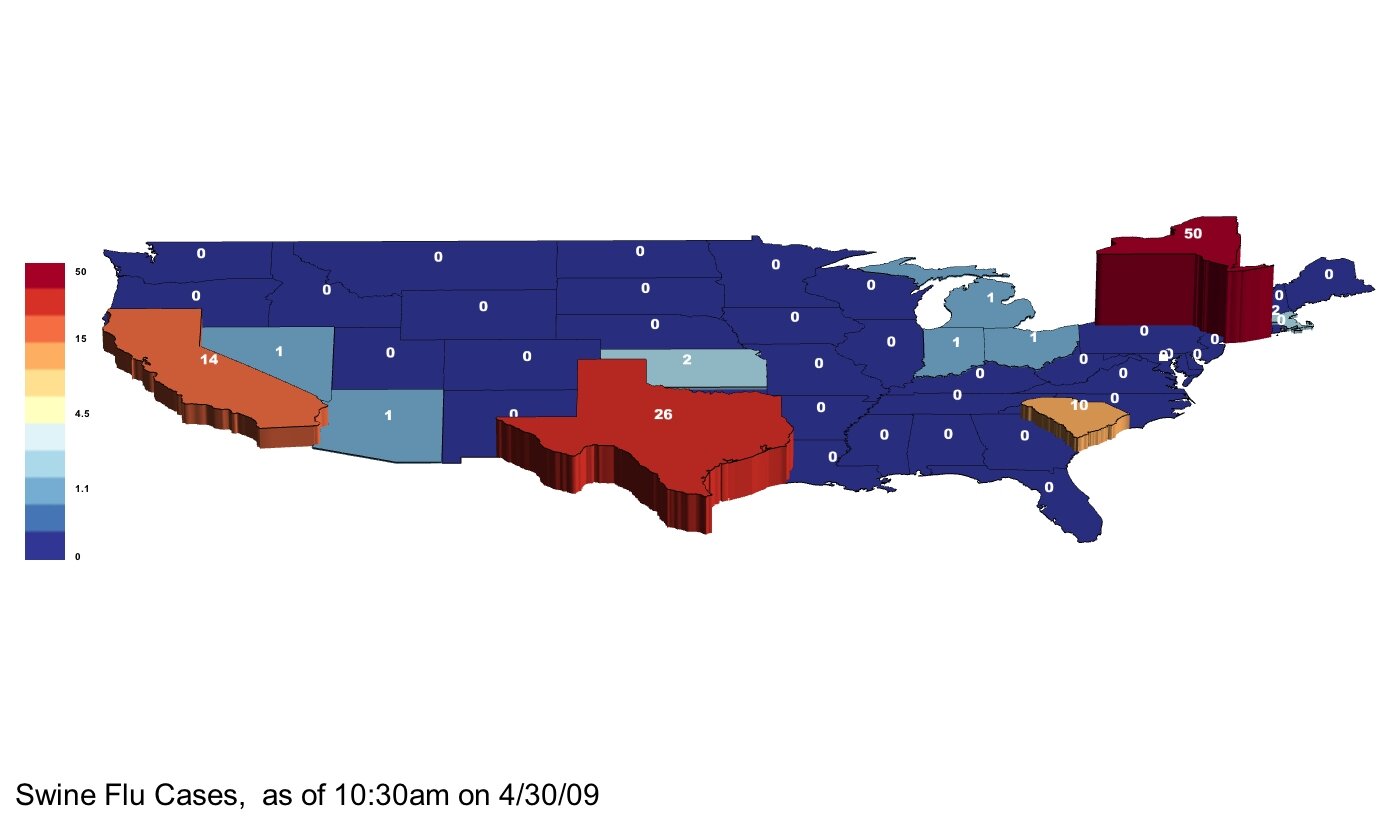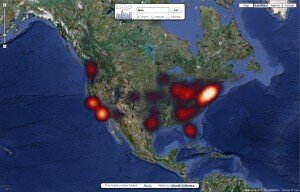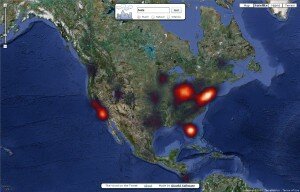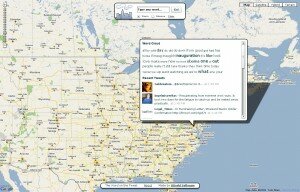I recently read a post on Cognitive Daily entitled “Reading graphs — How we do it, and what it tells us about making better ones.” The post exposed the research performed by cognitive scientist Raj Ratwani1, with the goal of tracking eye movements of respondents analyzing a basic population density map.
The inferences were fascinating, and reinforce many of the concepts that have inspired our work here at UUorld. In a nutshell, when posed questions that required analysis (rather than simple observation), respondents were stymied by disparate elements of the presentation: a four-level color scheme and cryptic legend essentially forced them to absorb the data in several steps, processing each step one after the other. The study found that respondents first had to “integrate the graph visually — that is, determine which cluster goes with which data. Then, [they had to] cognitively integrate — figure out the relationship between the clusters.”
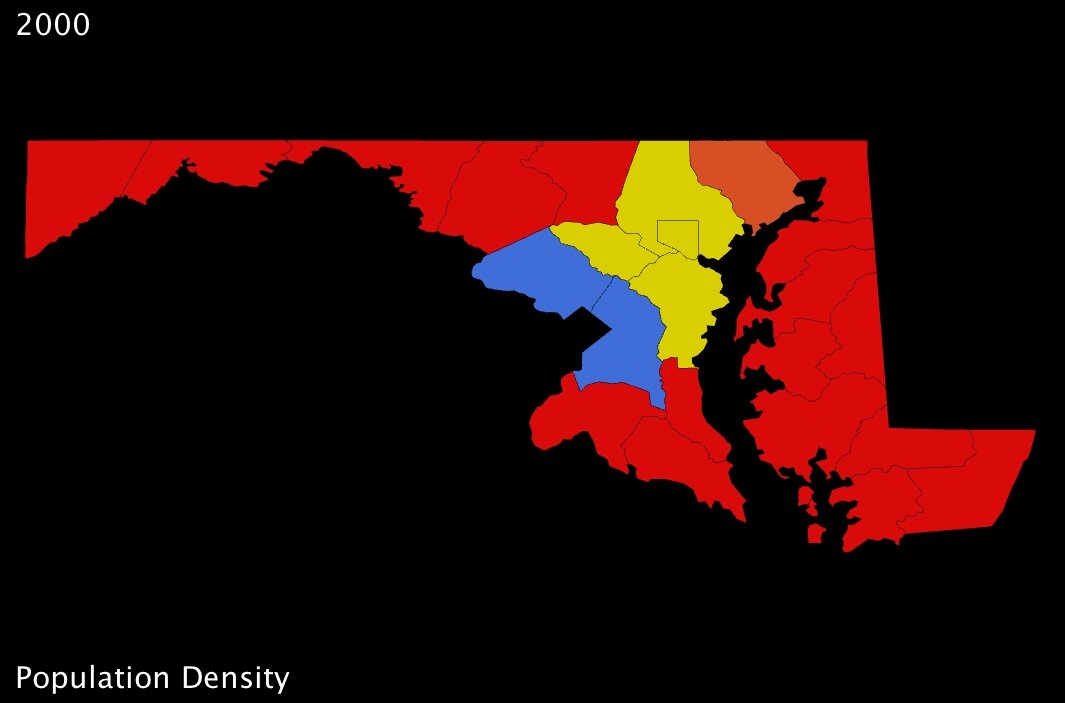
|
|
|
Maryland counties population density in 2000 (US Census Bureau) - click to enlarge
|
|
Ratwani and his crew used maps very similar to the one I’ve put together here (above). While they used a fictional state, they distributed the counties across it such that obvious “bands” of higher and lower population density were immediately apparent. In my map here, I’ve chosen Maryland because its counties are distributed in a similar fashion. Immediately, we can see that a 4-color spectrum is useless when it comes to differentiating most of the counties in the state.
Of course, making information clearer through maps is basically UUorld’s mission statement, and so I jumped on the opportunity to use our visualization engine to improve upon the Maryland map, and counter the array of “tough spots” exposed by Ratwani’s research.
For starters, much of the difficulty respondents had with the simple density maps came from shifting focus between legend and map, because the map itself failed to convey information on its own about a given county’s measurement. It might be tempting to conclude from this that simply a better legend was needed; but on the contrary, to my mind, the major shortcoming is that the globs of color convey almost no information beyond identifying the most basic regional trends.
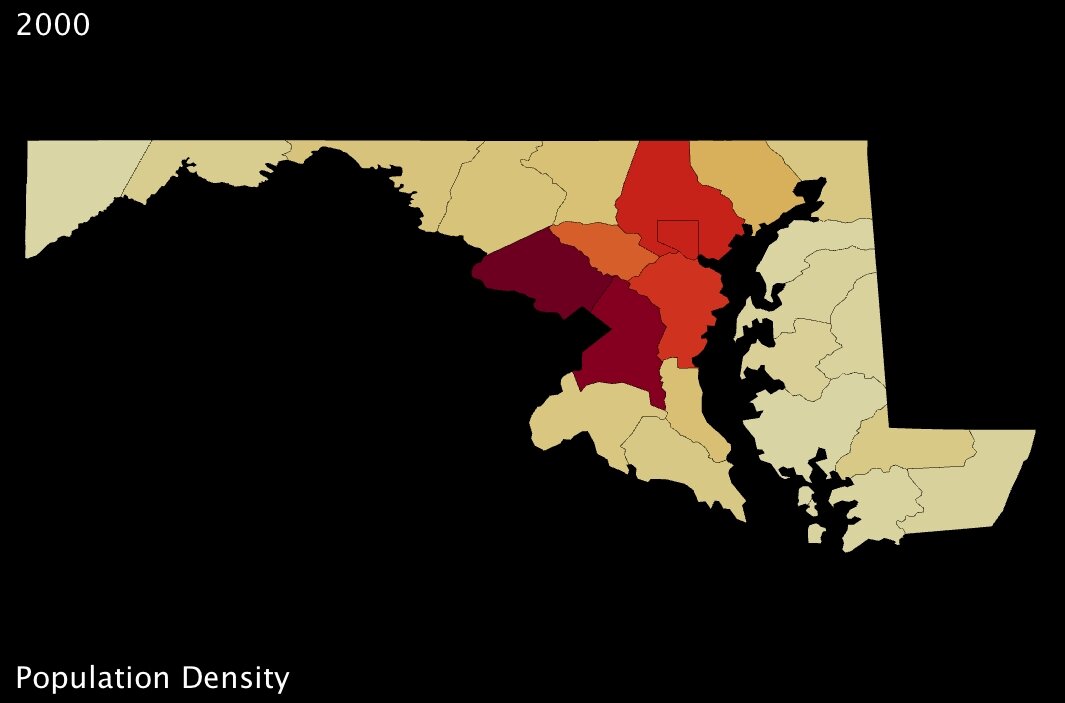
|
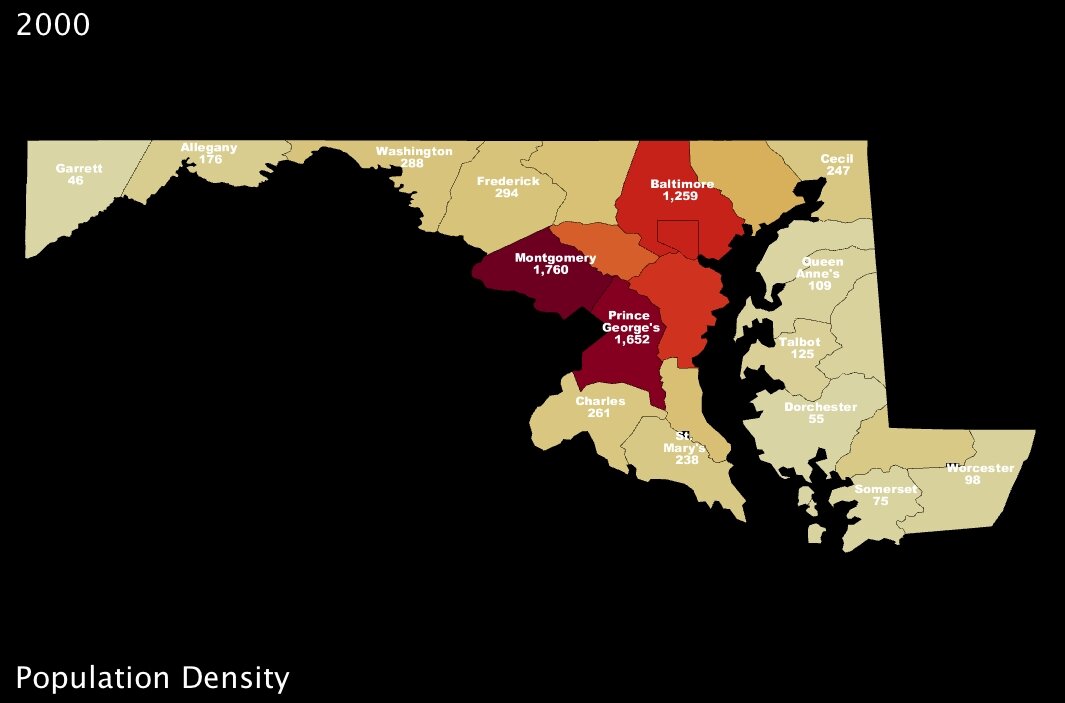
|
|
Maryland counties population density (US Census Bureau) - click to enlarge
|
Maryland counties population density (US Census Bureau) - click to enlarge
|
My first “fix” with UUorld, therefore, was to choose a better color scheme — one which uses a gradual scale, where colors are adjusted by value (above-left). Then, I added labels directly to the counties so that questions akin to those posed in Ratwani’s tests — e.g. “What is the population of X county” — could be answered instantly (above-right).
What continues to amaze me is just how remarkable such small changes can be. Immediately, using the newer Maryland maps, one can detect all kinds of subtleties amongst those counties which were nothing but red in the first image. And, for instance, whereas in the original map Howard county is grouped with Anne Arundel and Baltimore counties, all of them appearing solid yellow, our newer maps show clearly that Howard is significantly less dense than its eastern neighbors (about 200 people per square mile less so).2

|
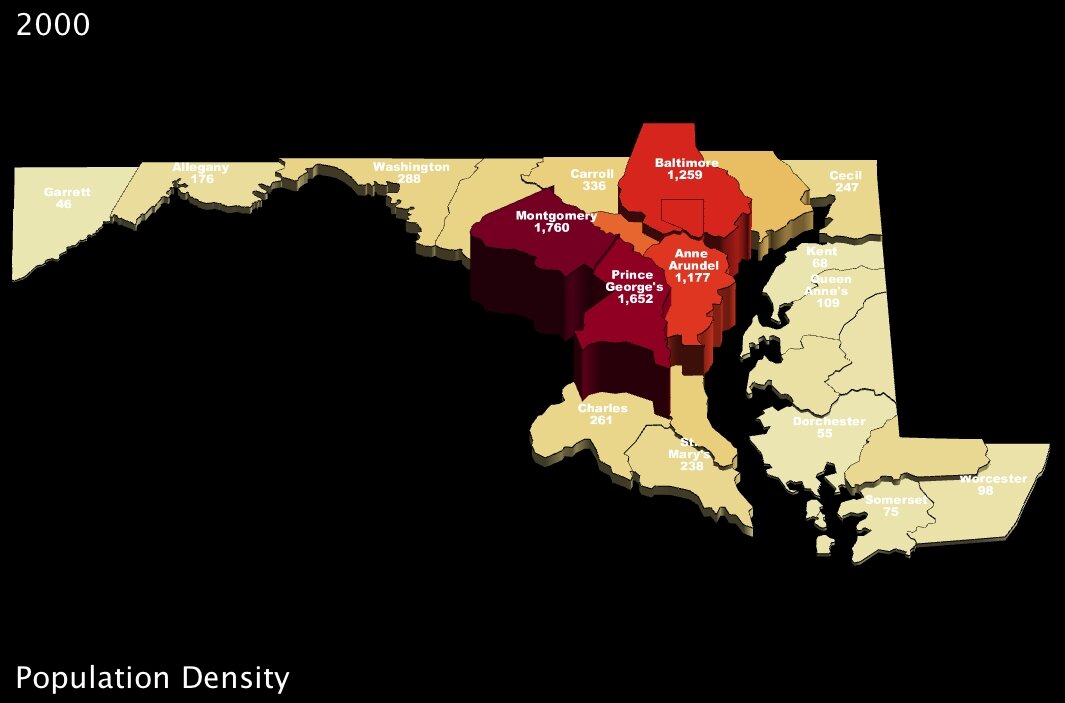
|
|
Maryland counties population density (US Census Bureau) - click to enlarge
|
Maryland counties population density (US Census Bureau) - click to enlarge
|
… And of course all exposed patterns are even clearer in 3D.
What interests me so much about the study Mr. Ratwani put together is that his point of departure was to measure how much thinking was required to answer a question using different maps. That strikes a chord with me because our company was created in recognition of the shortcomings of many charts and graphs, and the incredible informative potential of thematic mapping. It is exciting to envision a scientific analysis of how exactly 3-dimensional mapping improves cognitive efficiency.
For my part, I find that handling statistics with UUorld pushes me towards new discovery. In the case of Maryland population density, I was intrigued that the county-level maps seemed to indicate Washington DC suburbs were even more densely populated than the county that actually contains Baltimore. To put my musings to rest, I loaded up the zip-code level data from our Data Portal and very quickly had the answer: Baltimore is the most densely populated part of Maryland; the county-level maps just aren’t fine-grained enough to pick up the nuance.
Now I’m curious to go back and check on other major metropolitan areas around the country…
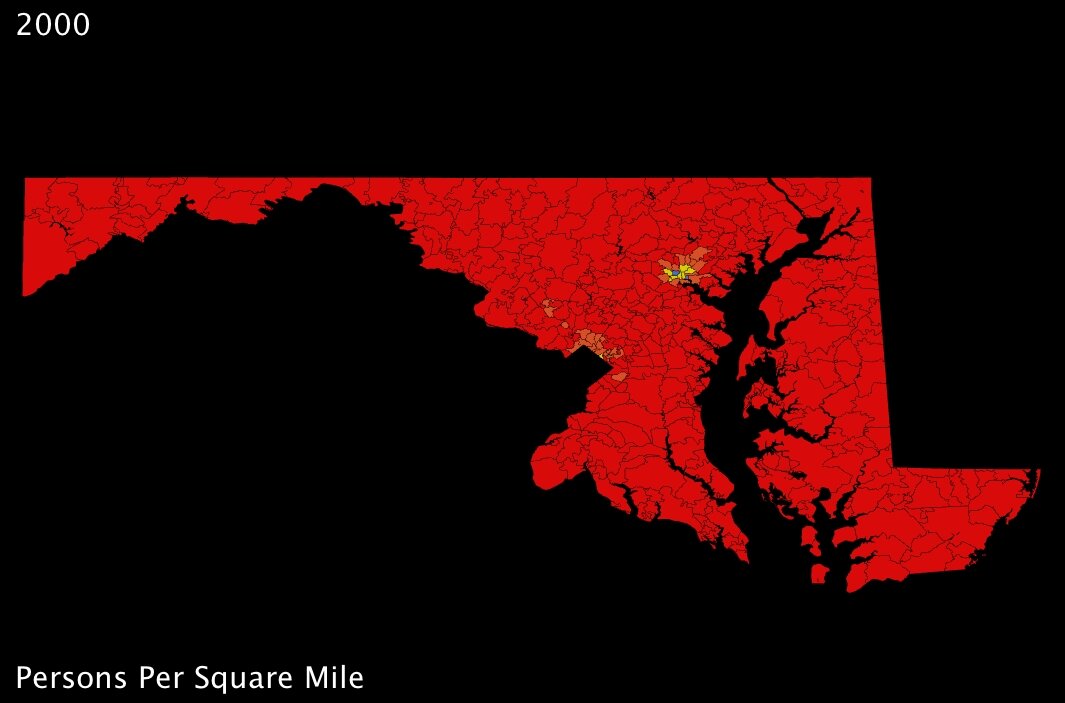
|

|
|
Maryland zip codes population density (US Census Bureau) - click to enlarge
|
Maryland zip codes population density (US Census Bureau) - click to enlarge
|
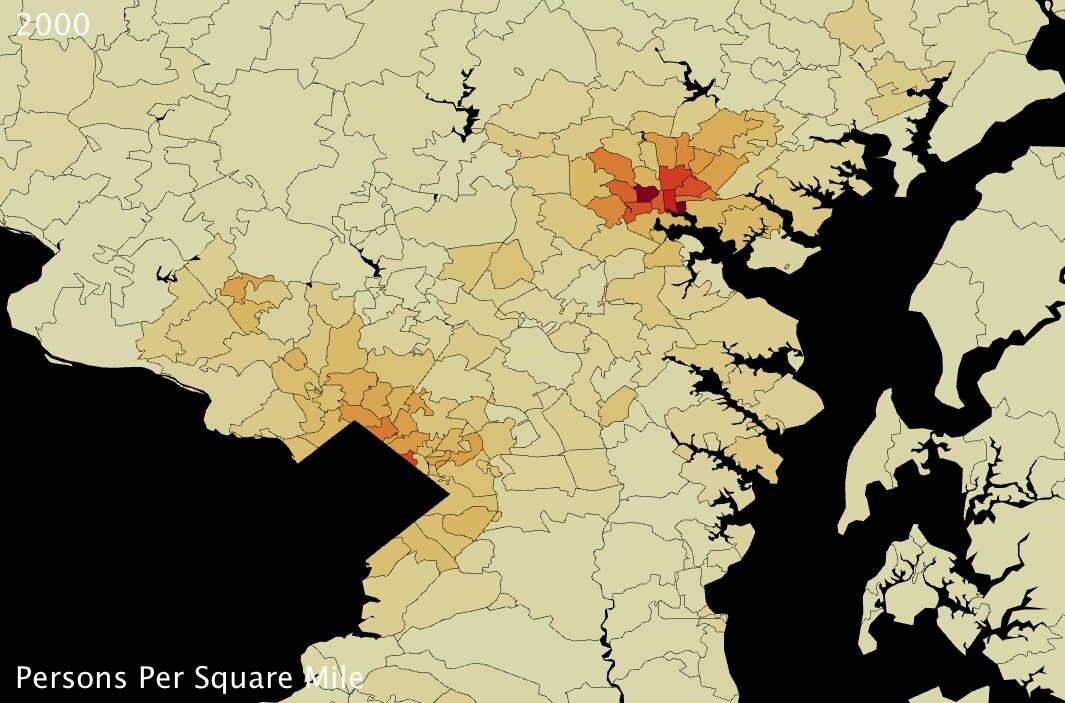
|
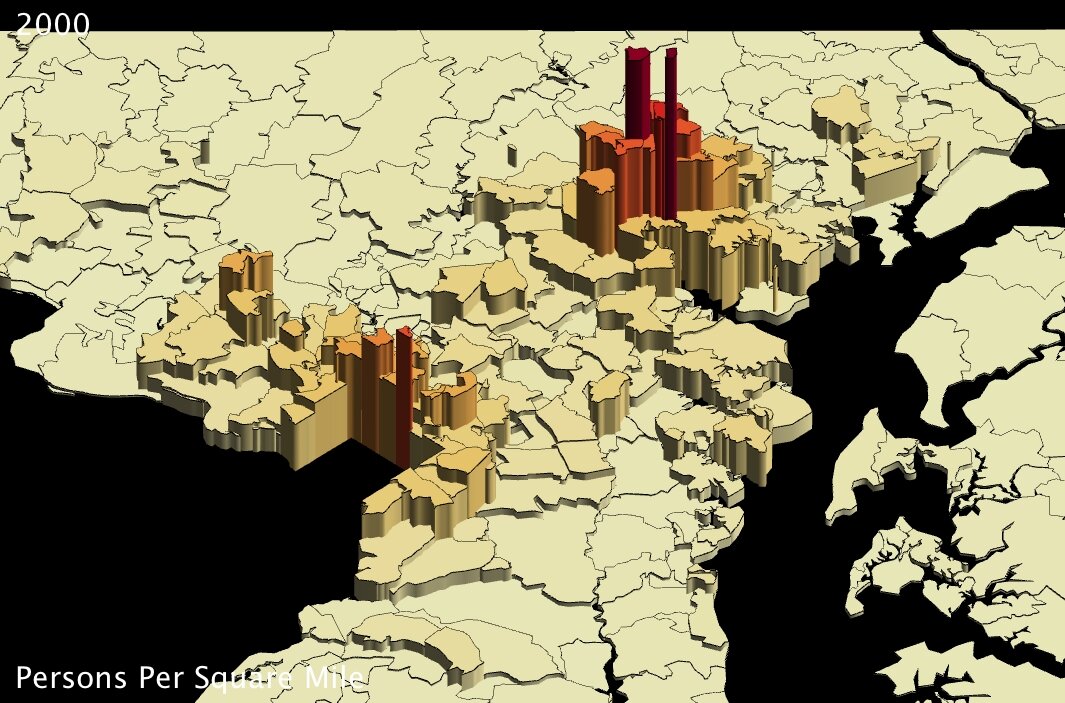
|
|
Maryland zip codes population density (US Census Bureau) - click to enlarge
|
Maryland zip codes population density (US Census Bureau) - click to enlarge
|
—
Footnotes:
1. Mr. Ratwani’s research, published in the Journal of Experimental Psychology, can be found here.
2. US Census Bureau 2000 population density figures: Howard County 983, Baltimore County 1259, Anne Arundel County 1177. (persons per square mile)
